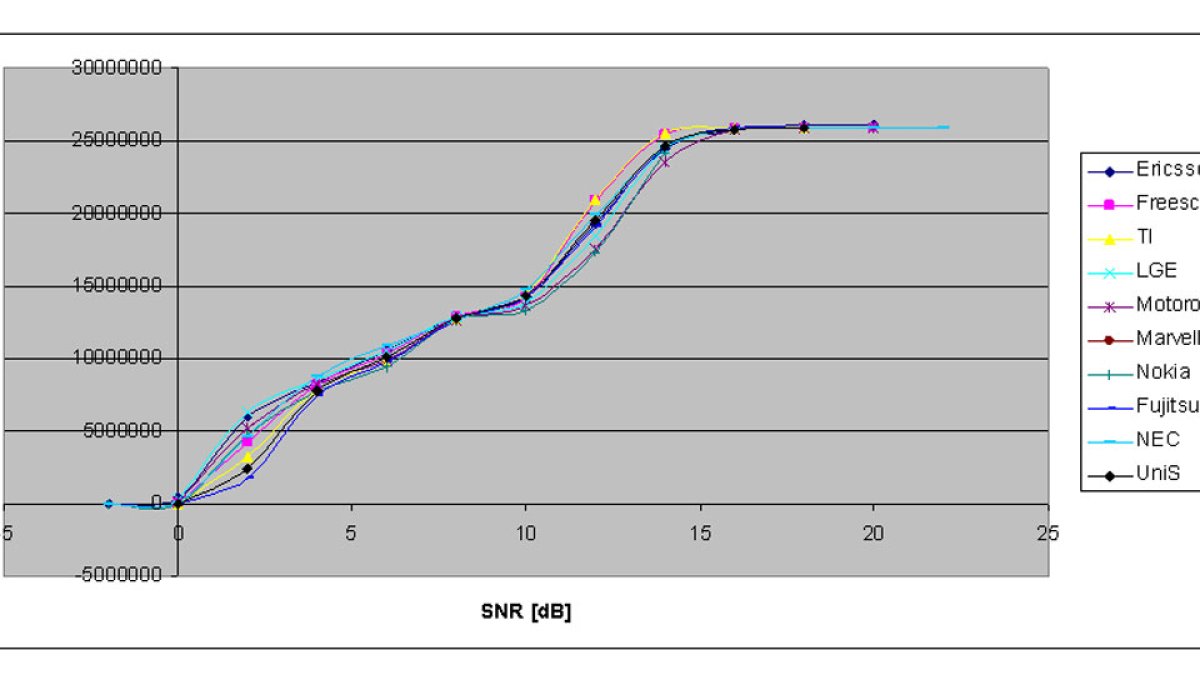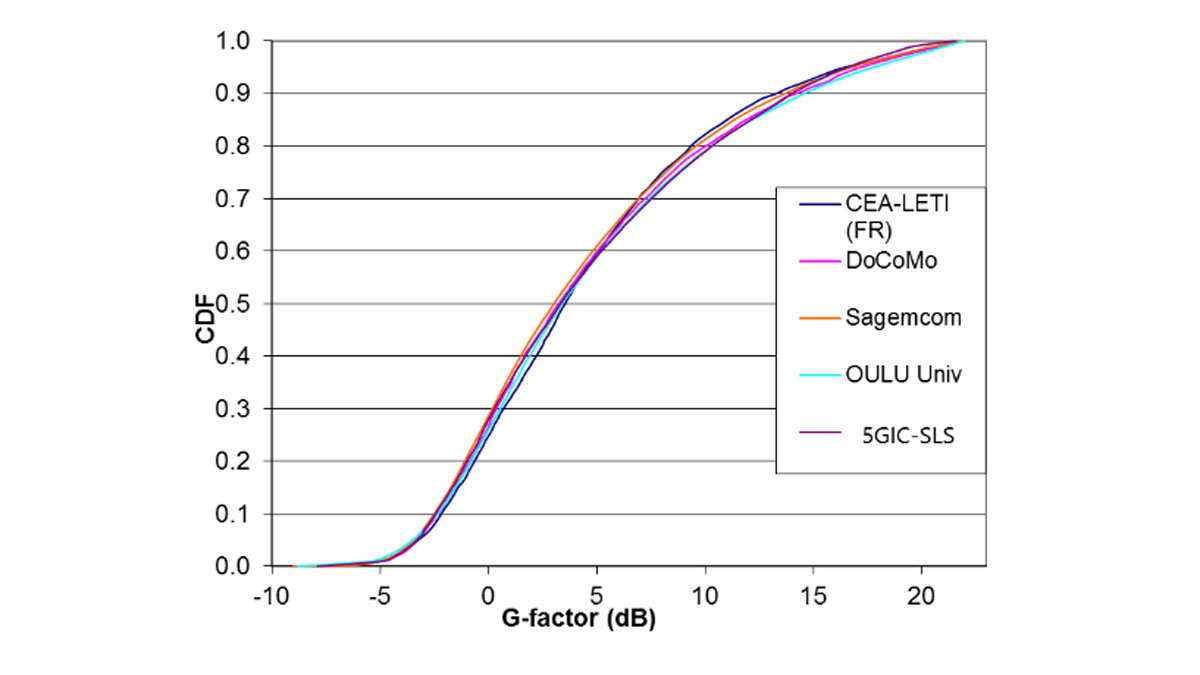
Link and system level simulators
Over the past few years, we have developed calibrated, industrial-grade simulators which can be used by both academic and industrial organisations for cellular communication (4G/5G)/satellite/WiFi research studies, radio access network planning/deployment, benchmarking and testing.
Facilities in detail
Link Level Simulator
The Link Level Simulator (LLS) is used to simulate a point-to-point communication link, and evaluates metrics such as bit/block error rate for a given signal to interference and noise ratio (SINR). A link simulator is also used to provide inputs to system level simulators in terms of block error rate versus SINR tables.
Our LLS is 5GNR/4G LTE Frequency Division Duplexing (FDD)/Time Division Duplexing (TDD) compliant, has been developed in Visual C++, has an attractive graphical user interface (GUI) for inputting simulation parameters and seeing the results graphically, and supports the following technical features:
- Modulation schemes: QPSK, 16-QAM, 64-QAM, 256 QAM
- Variable bandwidth
- SIMO, SFBC, SM-MIMO
- Channel coding: FEC (LDPC, turbo) and HARQ (chase, IR, partial)
- Range of radio channels (3GPP, ITU defined)
- Channel estimation (realistic)
- Receivers: Maximal ratio combining (MRC), minimum mean square error (MMSE), interference rejection combining (IRC)
- Simulation of any transport format or 3GPP CQIs tables.
Calibration
The simulator has been thoroughly calibrated against published 3GPP results from other companies.
Licensing
The LLS is available for commercial use. Please contact Professor Rahim Tafazolli at r.tafazolli@surrey.ac.uk for licensing.

An example showing University of Surrey results compared to other companies.
System Level Simulator
A System Level Simulator (SLS) is used to obtain system/network level performance of cellular networks for different deployment configurations (indoors, outdoors, urban/suburban/rural areas, motorways), different frequency bands, and different scheduling policies.
The SLS provides coverage/capacity metrics such as throughput per square kilometre, throughput per unit of bandwidth, number of users simultaneously supported by the network, and fairness in access to the network.
The outputs from LLS are fed to SLS as inputs in the form of block error rate tables versus SINR, so that there is an interface between the two.
Technical details and capabilities:
- SLSs support 5G Long Term Evolution (LTE) in both time division duplex (TDD) and frequency division duplex (FDD) modes, as well as 5G New Radio (NR) sub-6 GHz TDD mode.
- The simulators have been developed in C++ following a modular approach
- The simulators support both uplink and downlink, and several traffic models: Full buffer, File Transfer Protocol (FTP), Voice over Internet Protocol (VoIP), and Machine-Type Communication traffic (MTC)
- Flexible interface for several waveforms: Cyclic Prefix-based Orthogonal Frequency-Division Multiplexing (CP-OFDM), Universal Filtered Multi-Carrier (UFMC), Isotropic Orthogonal Transform Algorithm (IOTA), Generalised Frequency Division Multiplexing (GFDM)
- Link adaptation is based on adaptive modulation and coding with 3GPP Channel Quality Indicators (CQIs)
- Several schedulers are supported: Proportional Fair, Round Robin and Max CQI. Deployment scenarios include single tier homogenous network, two tier heterogeneous network with both hexagonal grid and random deployment, and wraparound deployment with correlated shadowing
- SLSs simulate the data channel Physical Downlink Shared Channel (PDSCH) and Physical Uplink Shared Channel (PUSCH), and consider the overhead of the control channel and signalling taking into account CQI feedback delay. Several parameters can be configured including the link-to-system mapping and abstraction model, network layout (base stations, users), scheduler, traffic model, antenna model, bandwidth, path loss model, shadowing correlation, and transmit power
- Traces and Key Performance Indicators: spectrum efficiency, user throughput, area traffic capacity, cell-edge and cell-centre throughput, block error rate (BLER), and others (user defined).
Calibration
The system level simulator has also been calibrated against results from other companies (see illustration below where our results are indicated by 5GIC-SLS).
Update to 5GNR (Above 6 GHz)
Work is currently in progress to update the SLS to 5GNR above 6 GHz (mmWave operation).
Licensing
The SLS is available for commercial use. Please contact Rahim Tafazolli at r.tafazolli@surrey.ac.uk for licensing.
WiFi simulator
Our WiFi simulator is a software tool based on the network simulator 3 (NS3) platform for performance evaluation of WiFi under dense deployment. Our tool incorporates practical channel models for dense scenarios recommended by the IEEE 802.11 Task Group AX.
It also implements an advanced wrap-around technique to produce the most realistic performance measures. This tool is useful for dense access point deployment planning.
Get in contact
If you have any questions or are interested in using our facilities, please get in touch.

Regius Professor Rahim Tafazolli
Head of the institute for Communication Systems


